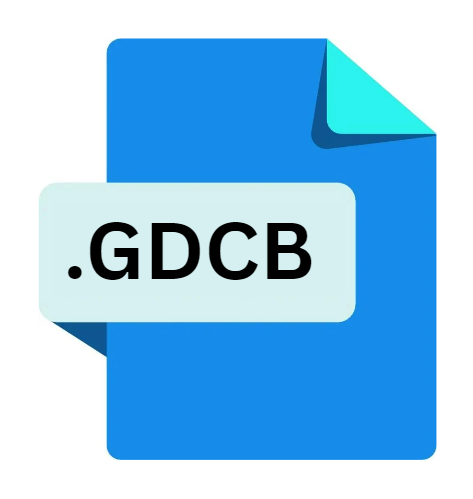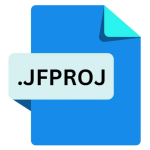.GDCB File Extension

GandCrab Ransomware Encrypted File
| Developer | N/A |
| Popularity | |
| Category | Encoded Files |
| Format | .GDCB |
| Cross Platform | Update Soon |
What is an GDCB file?
‘.GDCB file extension’ serves as a chilling reminder of the pervasive reach of ransomware attacks.
Originating from the notorious GandCrab ransomware, this file extension symbolizes the encrypted fate of countless digital assets.
Understanding its structure, origins, and implications is crucial in fortifying our digital defenses.
More Information.
GandCrab ransomware was first identified in January 2018 and quickly gained notoriety for its sophisticated encryption techniques and rapid evolution.
Its primary purpose was extortion, as it encrypted files on infected systems using a combination of RSA and Salsa20 algorithms, rendering them inaccessible without the decryption key.
The cybercriminals behind GandCrab utilized various distribution methods, including phishing emails, exploit kits, and malicious payloads hidden within legitimate software.
Origin Of This File.
The ‘.GDCB file extension’ traces its origins back to GandCrab, a nefarious ransomware strain that emerged in early 2018.
Operated under the ransomware-as-a-service (RaaS) model, GandCrab wreaked havoc across the digital landscape, encrypting files and demanding ransom payments in cryptocurrency for their release.
This extension specifically denotes files encrypted by versions 4.1 through 5.1 of the GandCrab ransomware.
File Structure Technical Specification.
Files with the ‘.GDCB’ extension undergo a complex encryption process initiated by the GandCrab ransomware.
The encryption algorithm employed by GandCrab is designed to generate a unique decryption key for each victim, making decryption without the key virtually impossible.
The file structure itself remains intact, but the contents are scrambled beyond recognition, rendering them unusable without decryption.
How to Convert the File?
Converting files with the ‘.GDCB extension’ back to its original state requires decryption using the corresponding decryption key.
Unfortunately, obtaining this key without succumbing to the ransom demands of cybercriminals is challenging. Victims are strongly advised against paying the ransom, as it not only funds criminal activities but also provides no guarantee of file recovery.
Instead, victims should focus on mitigating the impact of the attack, restoring files from backups, and implementing robust cybersecurity measures to prevent future incidents.
Advantages And Disadvantages.
The primary advantage of the ‘.GDCB file extension’ lies in its role as a warning sign, alerting users to the presence of GandCrab ransomware on their systems.
Detection of this extension prompts immediate action, including isolating the infected system and seeking assistance from cybersecurity professionals.
Its presence also signifies the dire consequences of a successful ransomware attack, as files encrypted with this extension are typically irretrievable without the decryption key, unless a backup exists.
How to Open GDCB?
Open In Windows
- Decryption Software: Utilize specialized decryption tools developed by cybersecurity experts or law enforcement agencies to attempt file recovery.
- Backup Restoration: If available, restore files from secure backups unaffected by the ransomware attack.
- Avoidance of Ransom Payment: Refrain from paying the ransom demanded by cybercriminals, as it not only fuels their illicit activities but also provides no guarantee of file recovery.
Open In Linux
- Decryption Tools: Explore available decryption tools compatible with Linux systems, designed to decrypt files encrypted by GandCrab ransomware.
- Data Recovery: Employ data recovery techniques or tools tailored for Linux environments to attempt file restoration from unaffected sectors or backups.
- Community Support: Engage with the cybersecurity community or forums specializing in Linux security for insights and assistance in mitigating the impact of the ransomware attack.
Open In MAC
- Decryption Utilities: Investigate decryption utilities or tools compatible with macOS, specifically designed to decrypt files encrypted by GandCrab ransomware.
- Time Machine Backup: If enabled, utilize macOS Time Machine backups to restore affected files from a previous state unaffected by the ransomware attack.
- Professional Assistance: Seek guidance from cybersecurity professionals or Apple-certified technicians for specialized support in recovering encrypted files on macOS systems.
Open In Android
- Device Isolation: Isolate the infected Android device from the network to prevent further spread of the ransomware and minimize damage.
- Factory Reset: Consider performing a factory reset on the Android device to remove the ransomware and restore it to its original state.
- Data Backup: If possible, restore encrypted files from secure backups stored in cloud services or external storage devices.
Open In IOS
- App Store Validation: Only download and install apps from the official Apple App Store to minimize the risk of encountering malicious software, including ransomware.
- Data Protection: Utilize iCloud or encrypted backups to safeguard iOS device data, ensuring a secure restoration point in case of ransomware attacks or data loss.
- Apple Support: Contact Apple Support for guidance and assistance in addressing potential security threats or file encryption issues on iOS devices.













